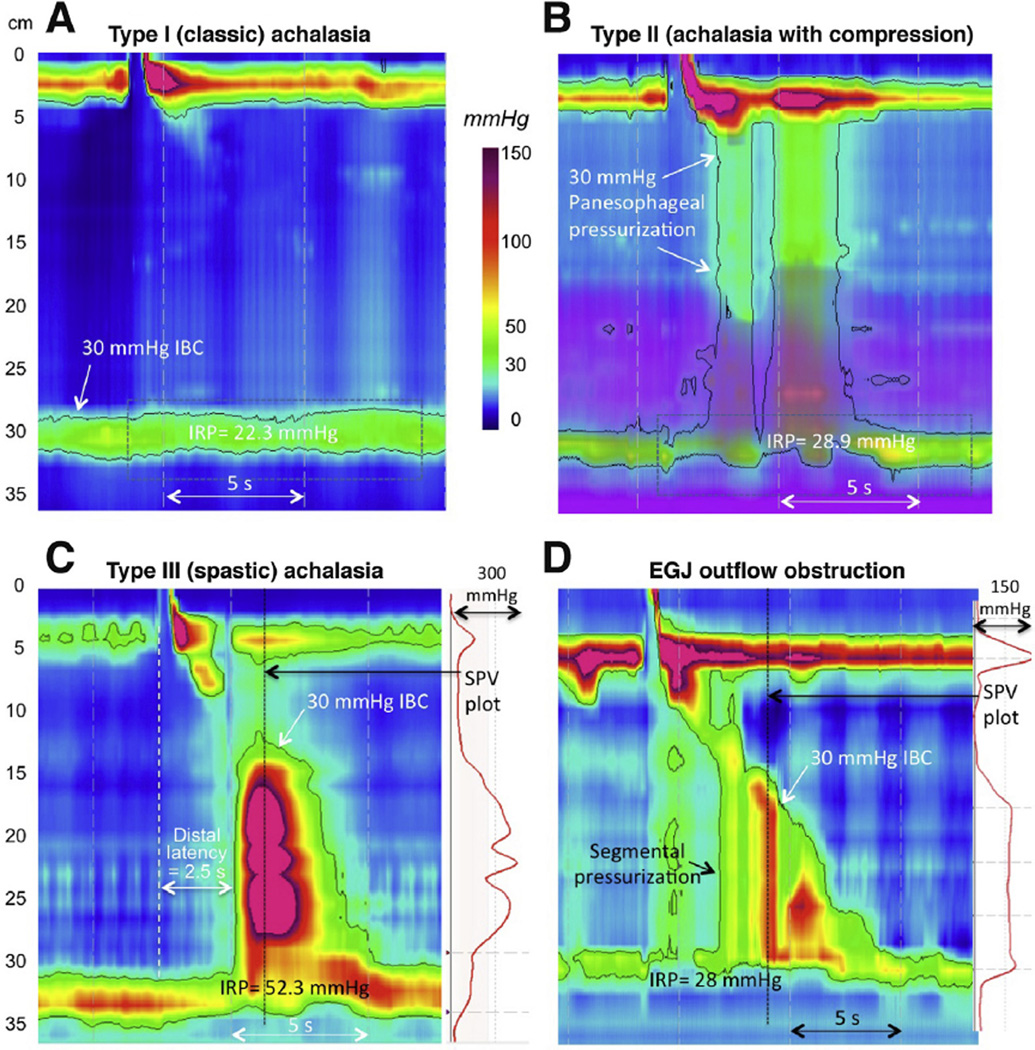Figure 2.
With the adoption of HRM and EPT, 3 distinct subtypes of achalasia were defined using pressure topography metrics. All have impaired EGJ relaxation and absent peristalsis, but the differentiating features are in the patterns of esophageal pressurization; type I has 100% failed peristalsis (aperistalsis), type II exhibits panesophageal pressurization ≥30 mm Hg in ≥20% swallows, and type III exhibits 2 or more premature (spastic) contractions. Note that the impedance data in the type II patient (purple overlay) indicates fluid retention in the esophagus. D is from a patient who did not meet the criterion of absent peristalsis but clearly shows impaired EGJ relaxation with segmental pressurization between the peristaltic contraction and the EGJ; hence, EGJ outflow obstruction was diagnosed. The differentiation between a spastic contraction and segmental pressurization is evident from the spatial pressure variation (SPV) plots to the right of C and D, indicating the top-to-bottom intraluminal pressure profile at the time of the black vertical dotted line. With segmental pressurization, the bolus is trapped between high-pressure zones. The patient in D was treated with a Heller myotomy with relief of dysphagia. Her postmyotomy study showed weak peristalsis. Several recent reports have shown differences in the prognostic value of these achalasia subtypes, supporting the classification scheme

